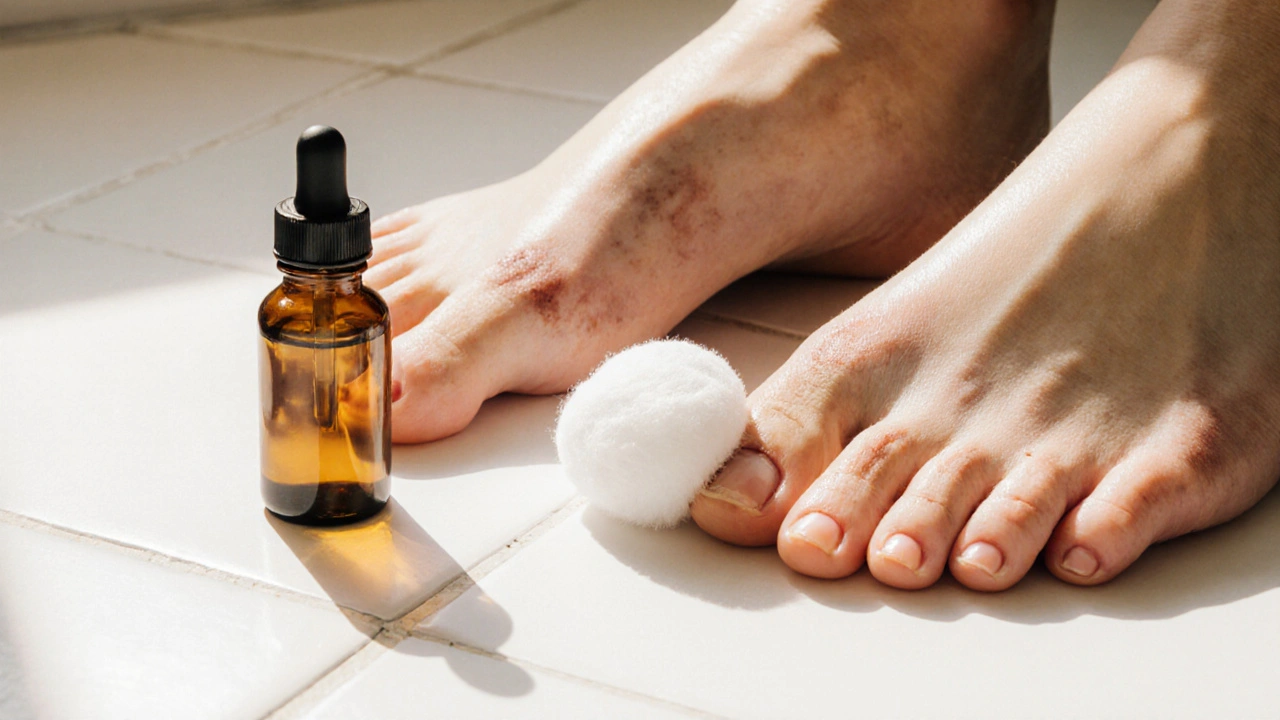Tea Tree Oil: Natural Antiseptic for Skin, Hair and Home
When working with Tea Tree Oil, a volatile essential oil extracted from the leaves of the Australian tree Melaleuca alternifolia. Also known as Melaleuca oil, it is prized for its strong antimicrobial properties and fresh, camphoraceous scent. Tea tree oil belongs to the broader class of essential oils, plant‑derived liquids that capture the fragrance and therapeutic compounds of their source. Because it contains terpenes like terpinen‑4‑ol, tea tree oil is able to penetrate cell walls of microbes, disrupt their metabolism, and reduce inflammation. This makes the oil a go‑to option for anyone looking for a natural way to clean skin, soothe minor wounds, or freshen household surfaces. The oil’s versatility means it shows up in shampoos, soaps, creams, and even cleaning sprays, bridging the gap between personal care and home hygiene.
How Tea Tree Oil Works as an Antifungal and Acne Solution
The power of tea tree oil lies in its role as a potent antifungal agent, capable of tackling fungi that cause athlete’s foot, nail infections, and dandruff. When applied to the skin, the oil interferes with fungal cell membranes, leading to leakage of essential nutrients and ultimately cell death. This same mechanism helps calm the overgrowth of the bacteria Propionibacterium acnes, which is a major driver of acne breakouts. In the context of acne treatment, tea tree oil reduces redness, decreases pore blockage, and speeds up the healing of existing lesions without the harsh dryness associated with many over‑the‑counter benzoyl‑peroxide products. Users often dilute a few drops in a carrier oil—like jojoba or coconut—and apply it as a spot treatment twice daily, seeing clearer skin within a week or two. The oil’s anti‑inflammatory action also eases the swelling and discomfort that accompany razor burns or minor cuts, making it a handy addition to any first‑aid kit.
Beyond skin, tea tree oil proves valuable when dealing with skin infections caused by bacteria, fungi, or mixed microbes. Studies have shown that a 5% tea tree oil cream can match the effectiveness of some prescription antiseptics for treating mild impetigo and eczema flare‑ups. Because it is less likely to trigger resistance, it offers a sustainable alternative for recurring issues. For hair care, adding a few drops to shampoo helps combat scalp fungus, reduces flakiness, and leaves a clean, invigorating scent. In the household, a spray of diluted tea tree oil acts as a natural disinfectant on countertops, bathroom tiles, and pet bedding. When using the oil, safety matters: always perform a patch test, avoid undiluted application on large skin areas, and keep it out of eyes and mucous membranes. With proper dilution and mindful use, tea tree oil becomes a reliable, multi‑purpose ally in daily health routines. Below you’ll find a curated collection of articles that dig deeper into specific uses, safety guidelines, and the latest research on this versatile essential oil.

Tea Tree Oil Benefits for Treating Athlete's Foot - Natural Antifungal Guide
Discover how tea tree oil fights athlete's foot with antifungal power, safe application tips, and a side‑by‑side look at conventional medicines.